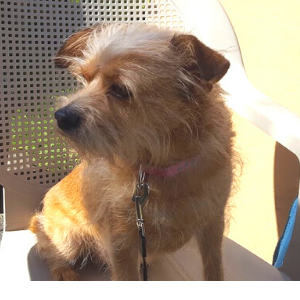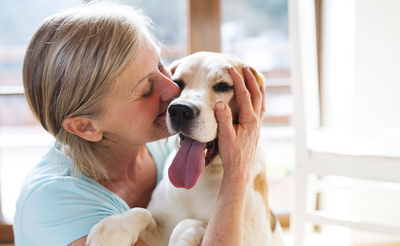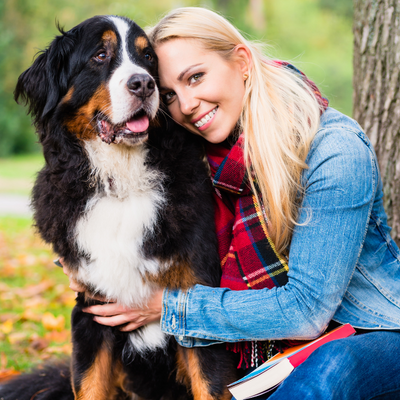
Whenever your dog barks do you wonder what he might be trying to say to you? In this article we’ll bring you useful information that will enable you to understand him a lot better. You will learn how to be more aware of the volume and intensity of your dog's barking as well as to look more closely at his body language. You'll be more in tune with your dog's signals and therefore you'll be able to understand him better.
Let's dive into the different ways your dog is telling you what he wants and needs from you.
- Disclosure: This post may contain affiliate links for your convenience which means that I will receive a small commission from your purchase at no cost to you. I just want to thank you for any support to our site because it all helps to fund for the care of my rescue animals.

We all wonder if a dog’s barking means something or is it just a lot of noise? Dogs typically don’t verbally communicate by barking as much as by their body language, facial expressions, body postures, and certainly by the different scents they smell. When we hear dogs barking at night, they are probably working off excess energy, announcing their presence, or trying to alert us to something they think is out of the ordinary. This is probably the type of messages conveyed to other dogs within ear shot and to us, the dog parents.
When your dog comes to you and deliberately barks, it may simply be to attract your attention. You’re going to try to guess what he wants to tell you, usually from the circumstances and his general behavior, and also from the particular form or pitch of the types of barks and sounds he makes. Different dog breeds can be more vocal than others but they all have their own styles of communication. We need to also note that barking is but one of the tools they use to communicate with you. They will also use body language. For example licking their lips if they’re hungry, or following you closely and excitedly if they want to join you for a walk outside or maybe even the kitchen where they might get a snack from you.

Dogs can get quite creative in the ways they will try to get you to cooperate with them and they will find different ways of getting your attention. Unfortunately sometimes those ways can be rather destructive. Especially when left alone. Dogs can let you know that they are scared and anxious by getting into places they are not supposed to go. They can destroy a lot of property and even hurt themselves in the process. But it is just their desperate ways of letting you know that they need you.

In the wild we can hear dogs howling or baying much like hunting dogs. This type of communication serves a real purpose and it’s an instinctive hunting cry informing the pack that the dog is on a trail. Most dogs will bark at strange noises as a warning as well as a threat display. And a dog that feels lonely and starts to howl may be sending out a gathering cry to other dogs nearby. While wild dogs on the other hand, never bark, they only howl. We should really consider if the barking of domesticated dogs could really be a form of communication more closely resembling our own type of speech? Since our fur kids spend so much time with us it makes sense that they would pick up our language and the manner in which we communicate with each other. Inadvertently we teach them to understand many of our own words and they obviously make an effort, sometimes quite successfully, to give meaning to their own utterances.

If a dog feels threatened then he’ll want to assert his importance and courage by instinctively employing all of the effects that make him look bigger and more frightening. He can raise his back to increase his height and hold his head and tail high in defiance. A dog who wants to show submission does just the opposite. He’ll make himself look smaller by crouching down and put his tail between his legs and lay his ears back as flat as possible.

The typical play invitation is seen with the forehead crouched, the hind quarters high, a wagging tail, bright eye and a happy little yap. Sometimes you’ll see a dog asserting his dominance by taking a perpendicular position with his head over the other dog's shoulders, all the while also nudging or pushing, with his neck arched, head and tail raised and tense. The more tensions you see in a dog’s body the more alert and aggressive he might become. A stiff stance with a steady gaze and a high, trembling tail is hostile. A high, steady tail is signaling self confidence but if he holds it low it indicates inferiority, exhaustion, ill health, or a nasty mood.

Pawing at you is usually a sign of affection, as well as nose-nudging which can be another invitation to play. Giving his paw is a common gesture with two possible meanings. When he gives his paw to you while avoiding eye contact he could be saying "Please forgive me" or when he paws at you, he’s probably saying "I really want your full attention right now." When he offers his paw to another dog, it's a sign of friendship and familiarity.

As parents we should take the time to observe our dog and pay him the courtesy of listening to him, so that we can establish a simple two-way communications system with our fur kids. His messages are generally very elementary, as he asks much less of us than we do of him. "I'm hungry," "I'm thirsty", "I need to go out", or "Come with me I think something is wrong" are the most common messages he’ll try to convey. He accomplishes this quite well considering his limited means. But the best messages by far are the loud barking and pitiful whines that mean to say "I've missed you!" as you come through the door after what seemed an eternity, to your very best friend.







Comments